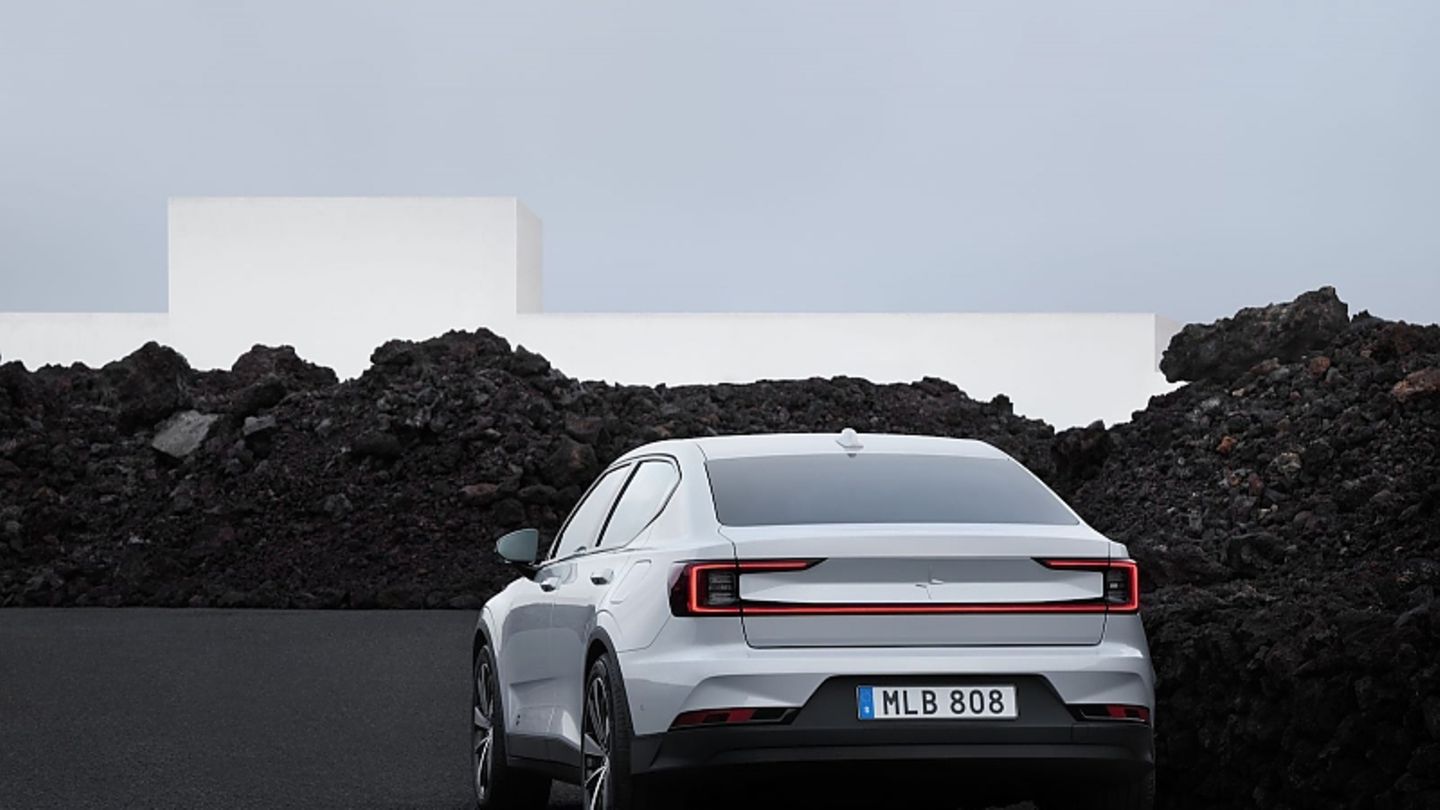Polestar is following a basic version of its successfully launched four-door. A price of around 45,000 euros makes the whole thing just as interesting for many as 165 kW / 224 PS.
With 300 kW / 408 PS / 660 Nm and all-wheel drive, the Polestar 2 is extremely sporty on the road, up to 205 km / h and at a price of over 56,000 euros too expensive for one or the other interested party. So it is no surprise that the Swedes are now following a cheaper basic version, which should be very interesting for some customers. The small entry-level Polestar 2 is powered solely by the front axle and therefore provides around half the power of the all-wheel drive version. With 165 kW / 224 PS and a maximum torque of 330 Nm, the electric front-wheel drive car is in a league with many other models from Volkswagen, Audi, Skoda, Hyundai and Mercedes.
The difference remains the body shape, because while the competitors have almost completely gone to crossover, the 4.61-meter-long Polestar 2 remains a sporty and attractive mid-range sedan. Visually, the basic version cannot be distinguished from the much more powerful version with dual motor. “With the new variants, we made sure that even the cheaper vehicles do not lose any of their special characteristics and the premium feeling,” says Polestar CEO Thomas Ingenlath, “even the entry-level model without optional equipment has the unique design of the Polestar 2 and a high one Equipment level. “
At the wheel, the front-wheel drive variant with 165 kW / 224 PS doesn’t take off as wildly as its big brother, of course, but with the torque of 330 Nm available right from the start, work is quite dynamic. From a standing start, it sprints to 100 km / h in 7.4 seconds and the Polestar 2 has a governed top speed of 160 km / h. The standard consumption is 17.1 kWh per 100 kilometers. The chassis tuning remains too tight for a vehicle of this class and unchanged, the Swedish electric model offers no adjustable dampers in its individual drive programs. And especially on broken road surfaces, the increasingly rare cobblestones or with transverse joints, it penetrates the interior too much. In contrast, you get used to the indifferent power steering and the pleasantly low noise level. Even since the Polestar 2 has been on the market for more than a year – you stand out in traffic even with the subtle gray paintwork.
You would do the two injustice if you would ask too much for the top version with the 300 kW / 408 PS and all-wheel drive. For many customers, the basic version is always fast enough; precisely because the range until the next charging stop after around 410 kilometers is only just below the 450 kilometers of the top model. In addition, the basic model is not only available with the smaller 64 kWh battery pack, but also with the long-range battery, which offers the 78 kWh of the 408 hp variant and then delivers 231 hp. Then the range increases to up to 540 kilometers before you have to refuel. However, the potential customers will miss the driven rear axle, because the fact that the Polestar 2 entry-level vehicle is driven via the front axle is no gain. Even with moderate accelerations at traffic lights, short turns in the city or on slightly slippery surfaces, the steering jerks noticeably and the drive forces are reduced by the electronics in milliseconds. Not a big thing, but quite annoying and not an issue with the all-wheel drive version. With the reduced entry-level performance, the problem would not be such a problem if the Polestar 2, such as a Skoda Enyaq or a VW ID.4, were driven in the basic versions via the rear axle alone.
The 405-liter cargo space at the rear is anything but massive under the electric tailgate. At least there is a second box with 35 liters at the front, in which the charging cable and small parts can be stored. If you fold down the rear seats, you can use up to 1,095 liters. Although the combustion engine is missing above the front axle, the space in the interior (2.74 meters wheelbase) is sufficient, but anything but opulent. This is particularly noticeable in the rear, where the cramped footwell is annoying when the driver is sitting far down. Also unusual and a shortcoming in this league: the Polestar 2 does not have a head-up display. The digital instruments and the large multifunctional screen in the middle of the dashboard are appealing. You quickly get used to the operation by touch or voice – nothing is missing and you wonder why the other manufacturers rely on in-house operating systems. The system developed by Google is better than most of the automakers; also because you already know the operation 1: 1 from your smartphone.
The front-wheel drive base model of the Polestar 2 with the standard battery costs at least 45,500 euros. The € 3,500 pilot package includes anti-glare mirrors, a complete package of driver assistance systems, parking assistants and adaptive LED headlights. A Polestar 2 can therefore be obtained from just under 36,000 euros, minus the grants currently in Germany. The large battery pack costs an impressive 3,000 euros extra and so some will probably use the 408 hp four-wheel drive, which costs another 5,500 euros extra. And next year comes the electric crossover called Polestar 3.
I am a 24-year-old writer and journalist who has been working in the news industry for the past two years. I write primarily about market news, so if you’re looking for insights into what’s going on in the stock market or economic indicators, you’ve come to the right place. I also dabble in writing articles on lifestyle trends and pop culture news.




